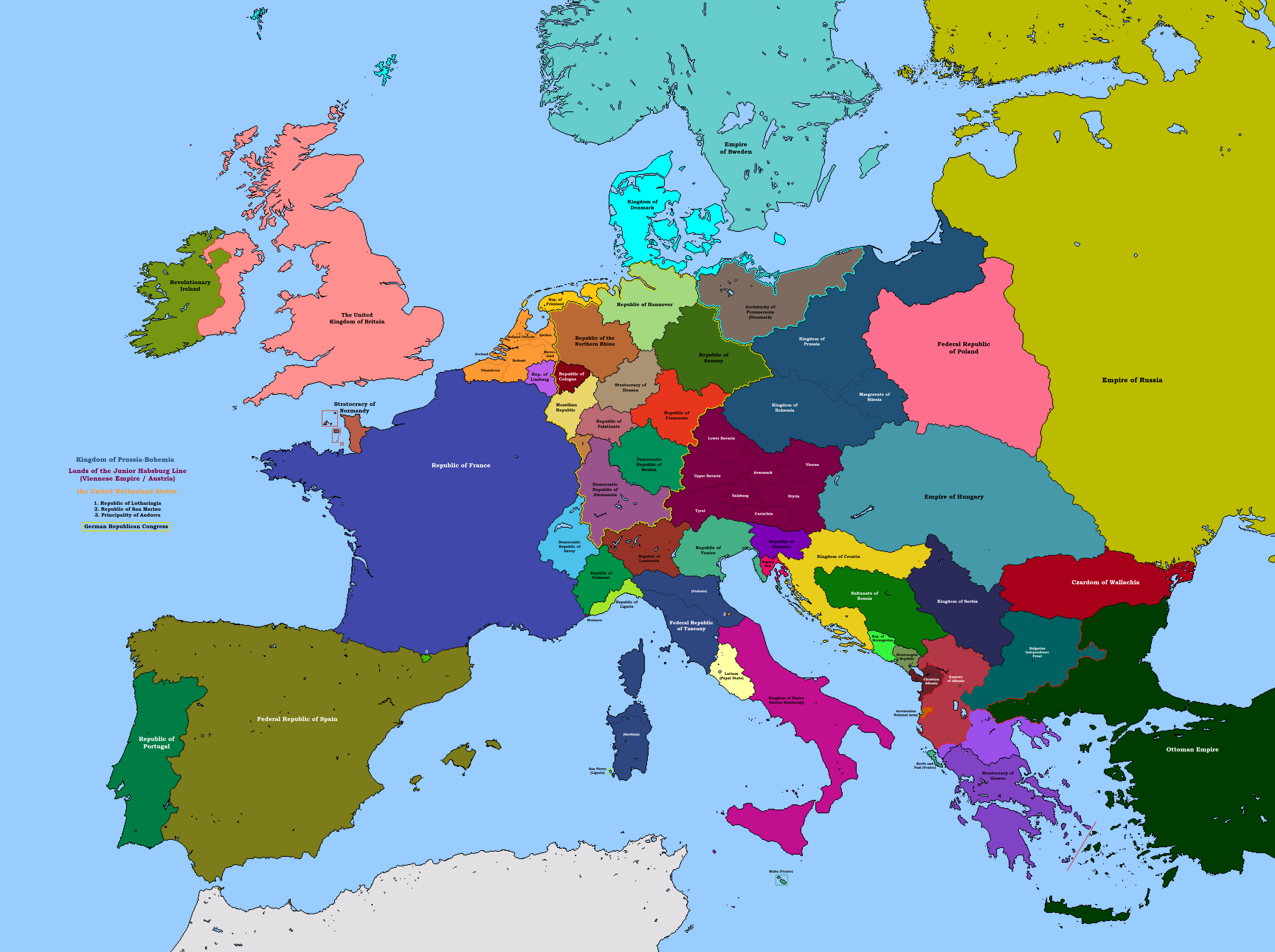HOME | DD
 Mapboi — Map of Europe 1661
Mapboi — Map of Europe 1661

#1661 #austria #bavaria #brandenburg #denmark #dutch #england #france #germany #history #map #norway #ottoman #poland #portugal #pyrenees #russia #saxony #scotland #spain #sweden #treaty #venice #westphalia
Published: 2023-07-27 17:15:00 +0000 UTC; Views: 5122; Favourites: 17; Downloads: 28
Redirect to original
Description
By 1661, most of Europe had emerged from the decades of conflict that comprised the Thirty Years' War and its aftermath. Poland was still under attack by Russia and its Cossack allies in Ukraine, while Venice remained at war with the Ottomans, but in western Europe the situation had largely settled.
France had absorbed new territories at Westphalia (1648) and in the Treaty of the Pyrenees (1659), the latter of which ended the war with Spain and gave France parts of Catalonia and the Spanish Netherlands. Sweden, similarly, had reached the height of its expansion through the wars of Gustavus Adolphus and his successors, and in particular his nephew Charles X, gaining new lands to the east, key territories in Germany, and achieving its "natural boundaries" in Scandinavia at Denmark-Norway's expense.
The Austrian Habsburgs, following the Thirty Years' War, saw their position in the Empire weakened and some territories lost, but tightened their grip on Bohemia, while their Bavarian allies gained most of the Upper Palatinate and the electoral title. The electors of Saxony and Brandenburg also gained territory, but it was Brandenburg that would emerge as a military power, making new gains in Poland (including full sovereignty in Ducal Prussia). Additionally, the Dutch Republic had finally obtained recognition of its independence from Spain at Westphalia, with the cession of the "Generality Lands" as well.
England, meanwhile, had emerged from a civil war and a revolutionary period under a restored Stuart monarchy, restoring the "Three Kingdoms" and allying with Portugal (still fighting Spain for independence) in exchange for Tangier and Bombay, with a marriage alliance to seal the deal. This largely ended Portugal's presence in Morocco, as her other key holding, Ceuta, had remained loyal to Spain; only Mazagan remained, and this only until 1769.
Nevertheless, war would soon return, for Louis XIV had just come of age and was prepared to expand France's borders through any means necessary, and conflict was brewing between the Austrian Habsburgs and the Ottomans in Hungary. Other powers would be drawn into these conflicts, or would pursue conflict with their own neighbors for other reasons. The new status quo established at Westphalia reshaped Europe, but Europe continued to be reshaped in its aftermath.
Note:
- I didn't do anything for Schleswig-Holstein-Gottorp, which controlled parts of Schleswig and Holstein and was a Swedish ally. It's too complicated.
- I didn't depict military occupation or revolts, such as the regions controlled by Russia and the Cossacks in nominally Polish territory.
- I left Morocco out too.
- Part of the Duchy of Bar (depicted here as part of Lorraine within the Empire) was actually nominally a French fief.
Related content
Comments: 3

👍: 0 ⏩: 1

👍: 1 ⏩: 0

























